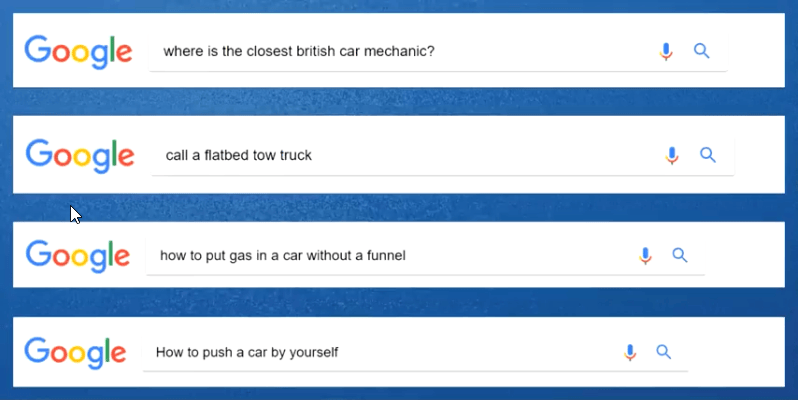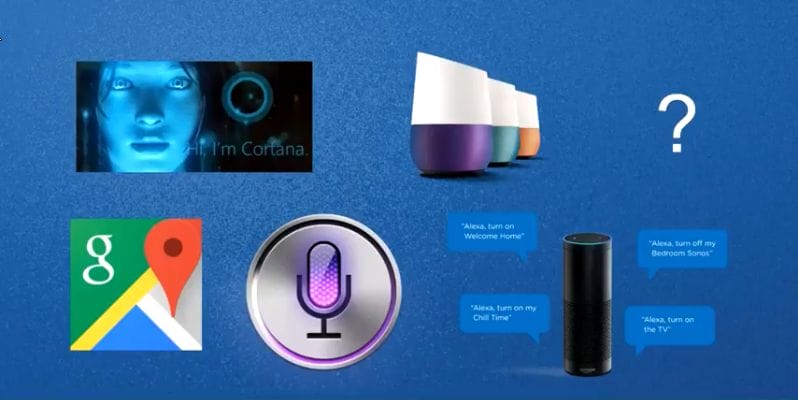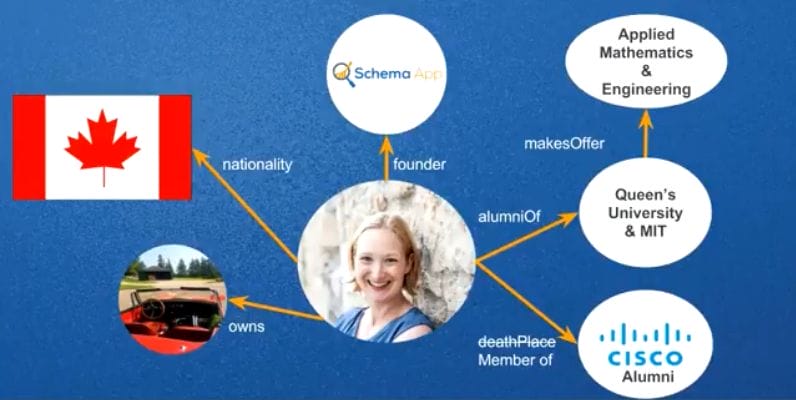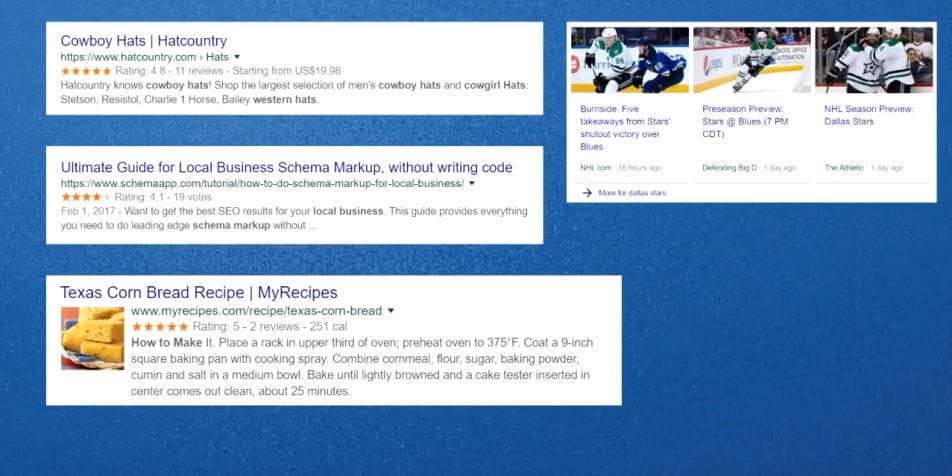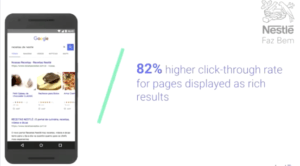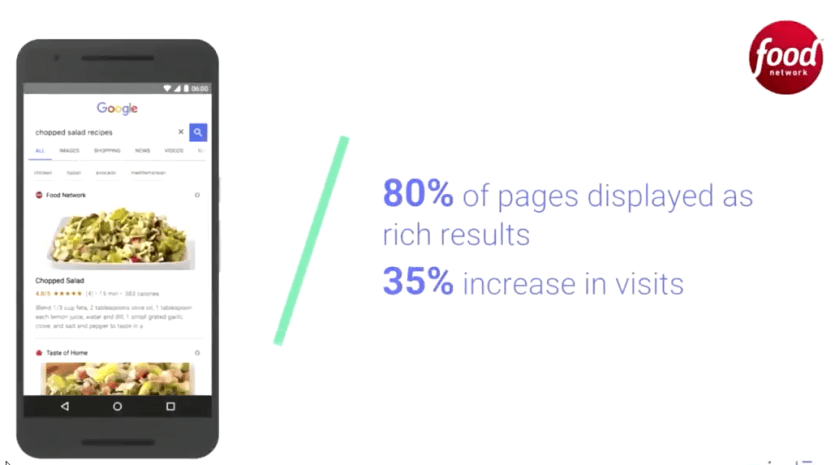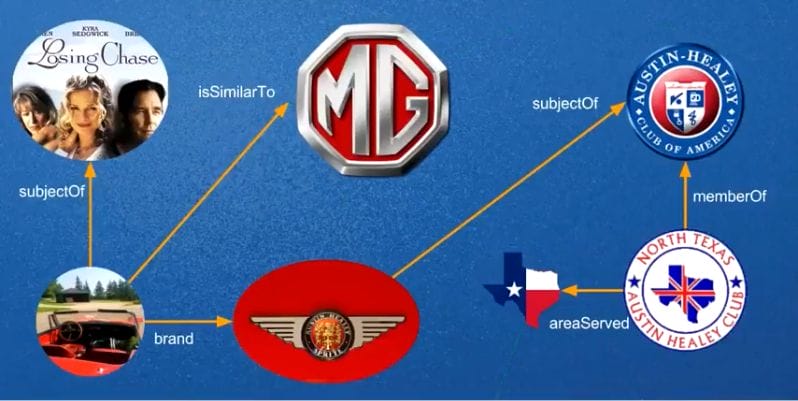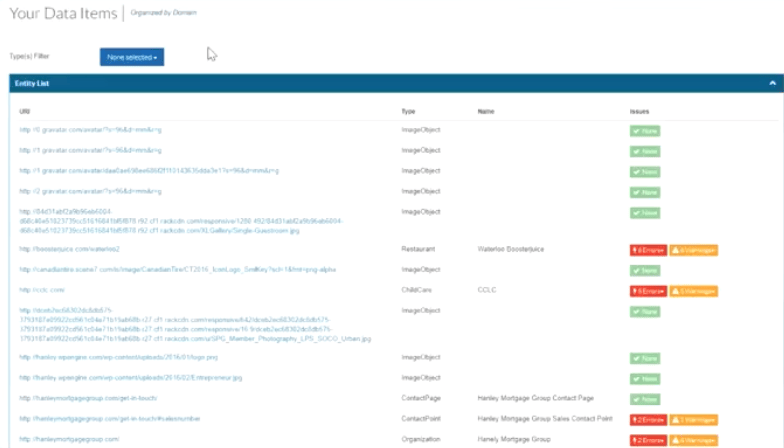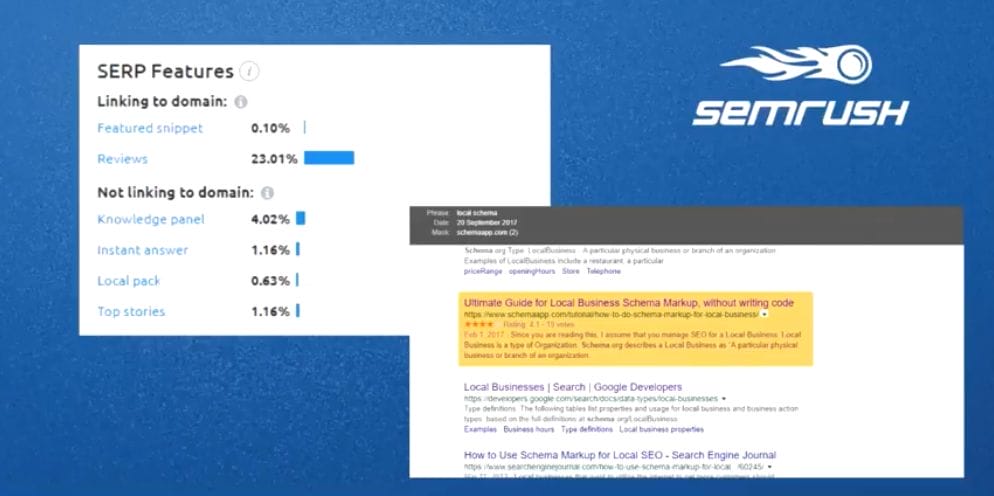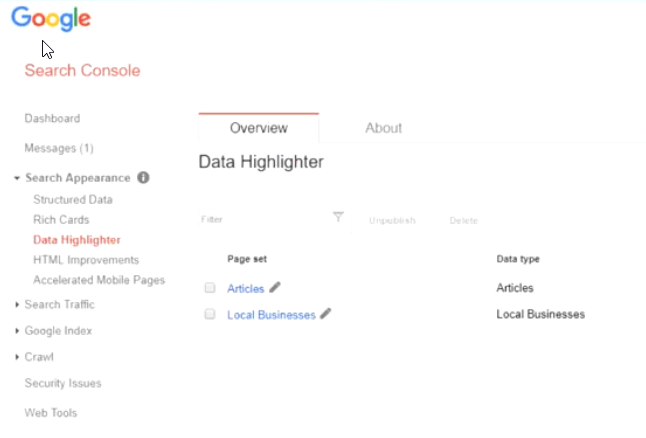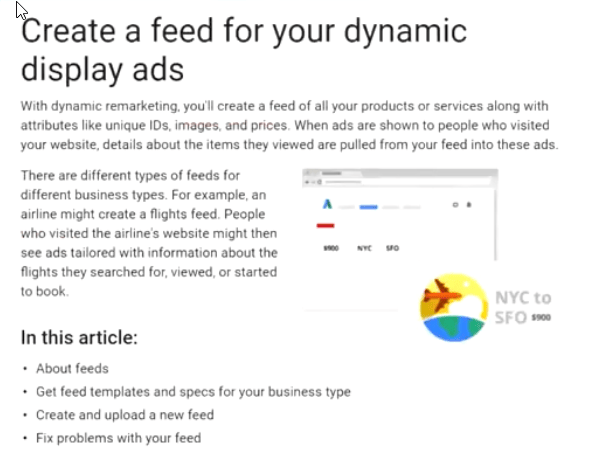Hi! My name is Martha van Berkel and I’m the co-founder of schema and today I’m going to tell you about how you can manage your brand for the machine channel. Now, let’s start by asking a question. Have any of you ever played six degrees to Kevin Bacon? Well, I am one degree from Kevin Bacon. Let me tell you how.
Meet Chase
This is my car. Her name is chase and she’s a 1965 Austin-Healey Sprite, and I got her at an auction in my late 20s. And my car is famous. She was the star of the made-for-tv movie Losing Chase, where Helen Mirren won a Golden Globe and it was directed by Kevin Bacon. And my car has all kinds of adventures. It is a total old man magnet. I mean anywhere I drive it, an old man leans out and asks me what year it is or tells me about how he had that car and he took his wife on it on their first date.
But my car wasn’t all happiness. I mean twice I’ve totally lost control of it while driving. The first time was when I was going down this giant hill in Toronto and I lost control of my brakes, and I kept pumping the brakes and nothing happened. The second time I was driving and trying to switch gears going onto the freeway only to find out that my gearbox was sitting on the road two blocks back. But thank God for Google, because no matter what happened when I ran into these predicaments, I got answers in search results in the data and not from the websites getting me out of the precarious situation that I found myself in.
And so, putting my digital marketer hat on, it begs the question – if I’m getting my answers to my search questions in search is everyone else getting their answers there too? And if that’s the case, then no one’s actually ending up on our websites and we’ve totally lost control. And this trend is just beginning. It’s not just in search results, but it’s also through voice search from Cortana, from Echo from Google Home Chat bots, you name it. Even our fridge is starting to interact with us.
And so, we need to take control back of our brand and explicitly tell the search engines and these machines what’s important about our brands so that it can be understood. And the only way that we can communicate with these machines is to speak their language. And the language that these machines speak is schema markup.
So, this is my knowledge graph.
My name is Martha van Berkel and I own a 1965 Austin-Healey. I’m Canadian and I’m the co-founder of Schema App, a software as a service that helps you manage your schema markup at scale without a developer. I also have a technical background. I studied applied mathematics and engineering at Queen’s University and I also attended MIT for Innovation and Strategy. I spent the first 15 years of my career leading Strategy and Innovation at Cisco in the services space looking at how we can automate and use our online channels in new and different ways. Before I finish my presentation today, I’m going to tell you how you can take control back of how your brand is being understood by machines using schema markup without a developer.
Before we get started, let’s make sure you understand what is schema markup. Well, schema markup is code. It was developed by the search engines in 2011 to help them better understand what a page is about and how it relates to other things on the web and I love this. The search engines are putting the burden on you and I, the digital marketers, to help them do their job better. Schema markup is also referred to as structured data and the code is often in a block called JSON-LD or in-line with microdata and businesses who adopt schema markup can get enhanced search results and email results such as Rich Results, Rich Snippets or Knowledge Cards. Here, you can see some examples that range from product information to reviews to enhanced articles, recipes, datasets, apps.
There’s over 40 different features that you can get from Google when you adopt Schema Markup, but rich results aren’t the only benefit of doing schema markup. You can also get higher click-through rates and increase quality of traffic and more customer engagement. And don’t take my word for it. Google presented their case studies and findings Google i/o this past May. For example, Nestle, when they adopted schema markup got 82% higher click-through rates on pages that had rich results or Rakuten saw 3.6 higher interaction rates after they implemented schema markup or the food network, that saw 35% increase in their visits.
Customer Story #1
One of our clients, an agency on the West Coast that has about 150 people that work with retail brands as well as hotel chains wanted to prove themselves. You know what is the value of a schema markup and how could they measure it, so they implemented schema markup at scale across 50% of one of the brands they managed website. And what they saw was amazing. They saw the click-through rate increase and increase rich results. But what they also saw was a drastic decrease in bounce rate and a higher increase in time on page. The benefit they measured using schema markup was the quality of traffic that they got to their client site and what I want to talk about today is how we can think of schema markup not as code but instead as a marketing strategy. And it all starts with how search works. And it really begins with Google’s knowledge graph.
Schema Markup As A Marketing Strategy
Now, Google’s knowledge graph is a neuron network of all the things on the web and how they relate to everything else, and they develop this knowledge graph by having their machines crawl the websites. Well, what if we started managing our brands in the same way?
This is the knowledge graph for my car and here I’ve identified the important things about my car and how will they relate to other things and make connections that you may not believe is true or exist, such as my car’s relationship with the state of Texas. And so, I’d argue that as marketers, we have a new job. We need to build our knowledge graphs, which means that we need to learn how to do schema markup. Now, you’re saying “Hold the phone, Martha! You said schema markup was code. And I’m a marketer, I’m not a coder, I’m not a developer.”
Well, I’m a marketer too and I’m telling you that my passion is enabling us — you and I, our tribe to adopt schema markup at scale with ease and the beautiful strategies that we create and get the results of when we want them and how we want them. But in order to do this, we have to stop doing schema markup like we do it today. We need to stop believing that we as marketers have to write JSON-LD, that we have to copy and paste it into websites, or generate JSON-LD out of Google tags and then go ahead and nit-pick through that in order to get the details right, or that we are dependent on a developer to execute on our beautiful strategies, only to have them to get it wrong and us have to explain it again. We can do schema markup on our own and the way that we do this is to focus on developing our strategy, our knowledge graph and find creative, fun ways to automate everything else. And customers are already doing this today. Smart and innovative agencies and marketers are building knowledge graphs.
Customer Story #2
I was sitting in an office in New York State just a couple weeks ago, and I was talking to the director of SEO and she had brought in her technical director to sit in on the meeting and I was describing this new way of doing schema markup, where you focus on the strategy and use really smart tools to automate the rest. And as we were going through the conversation leading to where I was trying to close the deal, she paused and looked to Jim her technical director and said, “Jim, what do you think?” And Jim laughed and promptly stood up and pushed in his chair and said, “You don’t need me here. This approach empowers your marketing team to do schema markup on your own.”
#1: Identify The Important Things
So how do you do this? Well, the first step in building your knowledge graph and defining your strategy is to identify the important things about your brand. What are the unique things about your brand that customers look for, search for, that makes you stand out from others. Now, notice I didn’t ask you what were the important webpages on your website. No, I want you to think about the brand and ask that question of what’s unique and you’ll identify some key things. So, with regard to my car, it’s the fact that it’s an Austin-Healey sprite, it starred in a movie, it’s like an MG Midget and it’s the focus area of old men all across North America and the Austin-Healey Club of America.
#2: Define Relationships
Once you’ve identified the important things, the next thing you want to do is to define their relationships. Now, this is best illustrated in an example.
So for example, in my car, I’m going use the schema markup language to explain that my car is the subject of losing Chase is similar to an MG Midget and is of the brand Austin-Healey. Now you notice I’ve also included some orange bullets here. This is relating now to Wikipedia, using it to define explicitly what I’m talking about. So, in this case, I’m explaining that Losing Chase is a movie that was made for TV directed by Kevin Bacon and explicitly explaining that it’s not a porno. I do the same thing using the definition from Wikipedia for Austin-Healey and the fact that the North Texas Austin-Healey Club serves the city of Dallas.
Now, figuring out these relationships can be hard. And lucky for you, my co-founder developed a tool to allow you to do this quickly. So here on the schema paths tool you can actually select two different things.
In this case, I’m showing a local business and a video object, and then look at ways that they can be related. So, you can see the last example here where my cursor is, the video object can be about a thing. So, in this case the video would be about the local business.
#3: Map Google Features
The third and final step in building a knowledge graph is to look at the Google Features and see what relates to you. Now, most people who look at schema markups start here because they want to get the stars and enhance search results. But I’d argue that’s only a piece of it. You know the fact that you’re getting rich results isn’t going to help you perform in voice search. And so, now you want to look up the over 40 different features and identify what relates to you. So, in the case of my car I want to tell it that there’s ratings about my car and also that there’s an event that the North Texas Austin Healey Club runs. And this way then, I can also make sure I’m capturing those opportunities in search to get those enhanced results. Now, once you do this and how people do schema markup today, this is where your beautiful strategy is done and everything comes to a grinding halt because now you need to hand it over to a developer to have them or hope that they execute on your strategy to get you the results that you need.
Now, in order to understand the challenges with the way that people do schema markup today, we at Schema App did a survey to people who do Schema Markup and ask what their top challenges are with this current approach.
Challenge #1: Maintenance
The first challenge that they run into when they’re manually creating schema markup and cutting and pasting it into their websites is around maintenance. Since January, there have been 44 updates to the Google Feature recommendations and to the schema.org vocabulary. Imagine if you had to ask your developer to make changes 44 times on each of your clients’ sites since January. It really just isn’t scalable. And this means that we have to shift. Instead of managing the code and trying to get details of code and make those changes manually, we need to think about how we can manage the things in our knowledge graph. And just like our car has a dashboard, imagine if you had a dashboard telling you red, yellow or green as to the health of your schema markup and that you could update it with a click off site without requiring a developer. This is possible in Schema App.
Challenge #2: Showing Value
Now, the second challenge is around showing value and measuring the value of the schema markup is really no different than some of the things that you’re already measuring today with regards to SEO. You’re going to want to look at traffic, click-through rate. But you’re also going to want to look to see if you have rich results and in the past this has been difficult. Now I’m happy to report that Google Search Consoles’ structured data report is now allowing you to look through search appearance for rich results and measure those values there.
SEMRush is also doing a great job enhancing their SERP features report that shows you which rich results you’re achieving and then examples of how they’re seeing that in search results and Moz is doing the same.
Enhance Your Business Intelligence
Now, in addition to measuring results in your analytics and through those different tracking platforms, you could also use schema markup to enhance your business intelligence. And what you’re doing then is taking all this structure and information you provided about a page and adding it into your analytics. For example, here’s how I’ve added the schema markup for the blogs of my website, pulling in the author so that I could see which author is driving the most traffic to our website, helping me inform my content strategy.
Now imagine if I also added topic now your marketing team in content has data-driven answers on who’s driving the best results in content. The same can apply for products and looking down to a feature, such as maybe the colour of a T-shirt to see which one drives the largest shopping cart than informing promotions.
So, this area of semantic analytics has been around for a couple of years but now you’re able to automate it and use it as business intelligence, therefore positioning your SEO team now as a business strategist within your organization. Now with search changing to be more voice-driven and through these different machines I have to say like how do we think analytics are going to change, and while I don’t have an answer here, I think it’s an interesting topic for how the metrics around the value schema markup are going to be changing with the changing landscape of voice search as well as machines consuming our brands’ information.
Challenge #3: Scaling Up
The third and final challenge is around scale. Now, if you’re a developer or a technical SEO person, you’re saying, “Martha, scale’s easy. All I do is go in and add code to my template or I go ahead and create this elaborate script in Google Tag Manager to generate JSON-LD.” Well that’s all good if you’re a developer, but it brings you back to the problem of maintenance. And what this means that we have to shift the way that we think of doing schema markup at scale. And I like what Google’s done with our data highlighter it has some of the key principles of this new way of managing schema markup.
So, first of all the Google Data Highlighter allows you to manage your schema markup centrally. It allows a marketer to map the content on pages to the schema markup vocabulary without writing code, and then automatically deploy that to the site. Now, the problem with the Google Data Highlighter is that it only does the basic schema markup for Google features and that it has a bit of a black box behind it that you can’t see what’s working.
And so, Schema App is creating a professional version of a highlighter that allows the marketer to do all the schema markup they want across any type of the schema markup vocabulary at scale across as many pages as they want.
The second way that you can do schema markup at scale is to take an existing data feed that you have and convert that into JSON-LD, and automatically deploy it through a tag.
So, for example if your organization has already invested in creating a Google AdWords feed why not put that into a JSON-LD generator convert it into JSON-LD and then deploy it?

And then finally, there are some plugins and add-ons that you can use for doing schema markup although most of them again start up focusing on that knowledge, focusing on those Google Features and not enabling you to build that robust knowledge graph allowing you to connect to external things like Wikipedia or to other elements within your brand.
Customer Story #3
A customer that we’ve been working with, a large retailer across Canada, it was running into this exact problem. Here was this innovative marketing team that wanted to participate in the Google local inventory ads as well as enhance their search results, but they were backlogged by their IT organization. And so, what they were looking at doing was taking their existing data feeds, putting that into schema app to convert it into JSON-LD and then deploying it through Google Tag Manager, labelling them to be in control of their future and them to be able to execute on their schema markup strategy without the burden of their IT teams’ backlog.
Now, the value of schema markup is well beyond the rich results that I’ve shared today. it can also enhance your on-site search or your chatbots, allowing them to better find or more accurately match with content that’s on your website. and you can imagine if everyone’s managing their knowledge graph for their brand, how you could use that to understand competitive insights about their brand. They are identifying and finding new things about their brand. Why not crawl their schema markup with a schema app analyser or similar to understand what they’re showcasing to voice search and other machines?
And finally, you can use schema markup to basically identify things you can do around your content strategy. I showed you how semantic analytics can inform what content is working on your site. But why not also look at the definition of schema.org to see what the machines themselves are asking you to tell them about your brand, and therefore use the schema.org vocabulary to tell you what you should put on the page to explain holistically and explicitly about your products, your local business, etc.?
The world is changing. This is our new car dashboard.
And our brands don’t just need to speak to search engines like Google but it needs to speak to machines like Alexa and Echo as well as to chatbots and we need to be able to identify the fun and unique things about our brand, by managing their knowledge graph like my first-degree connection with Kevin Bacon.
It all starts by defining your knowledge graph in your strategy and finding unique and creative ways to automate the rest, putting you in control of your schema markup strategy and the results you get from it. The future is bright and full of machines. And we have a new job of digital marketers to make sure that our brands are understood in this new machine reality.
If you need a hand getting started with your structured data strategy, we’ve helped customers such as SAP and Keen Footwear drive more quality search traffic to their websites.
Start reaching your online business goals with structured data.


